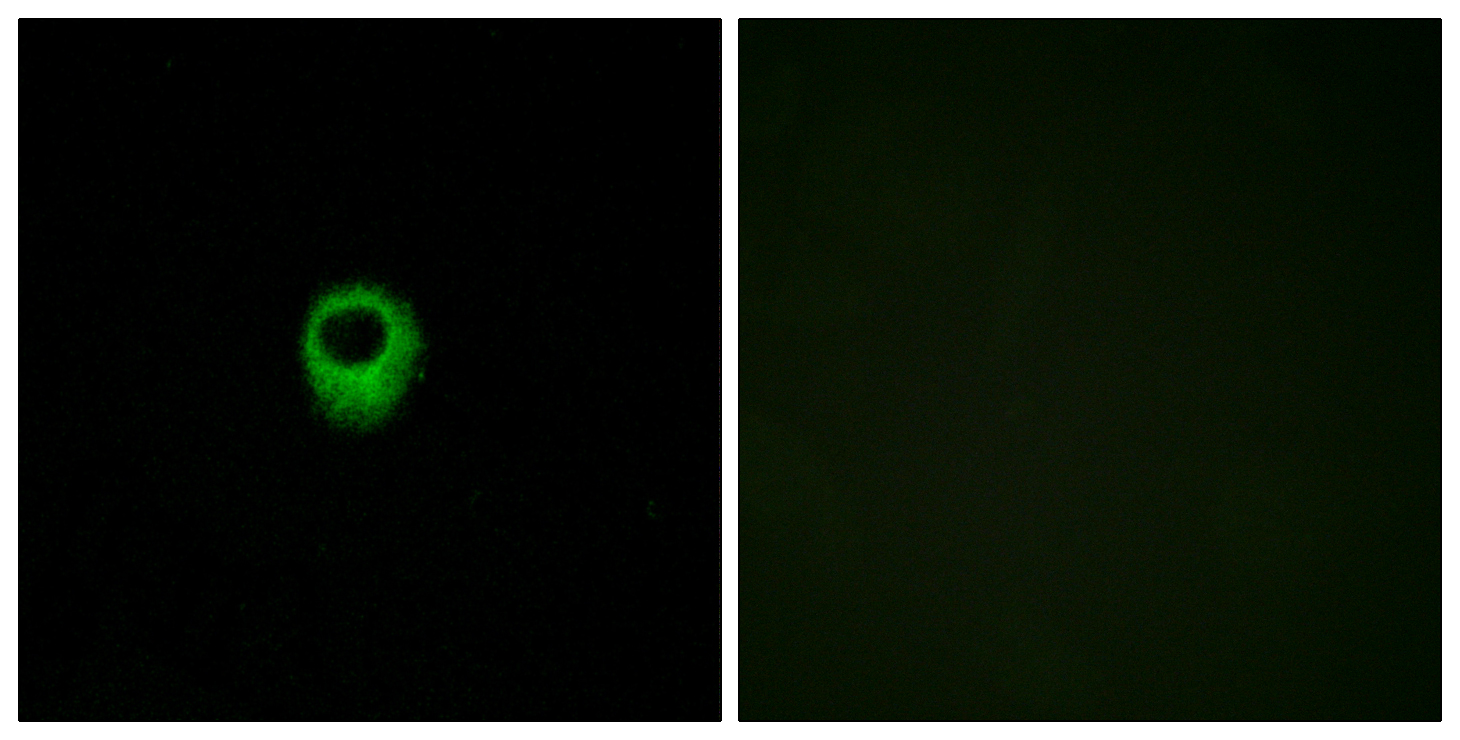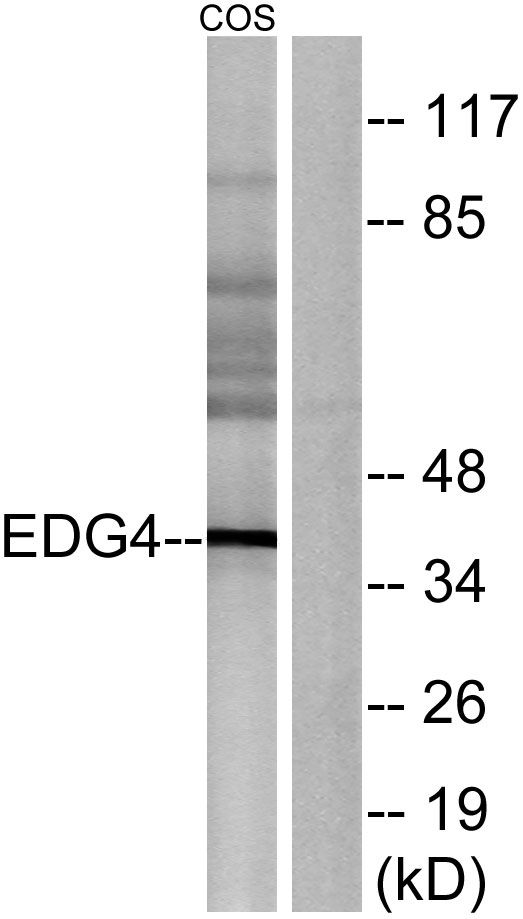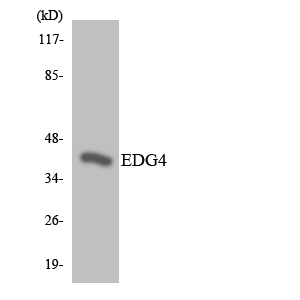EDG-4 Polyclonal Antibody
- 货号:YT1464
- 应用:WB;IF;ELISA
- 种属:Human;Mouse;Monkey
- 简介:
- >>Rap1 signaling pathway;>>Phospholipase D signaling pathway;>>Neuroactive ligand-receptor interaction;>>PI3K-Akt signaling pathway;>>Regulation of actin cytoskeleton;>>Pathogenic Escherichia coli infection;>>Pathways in cancer
- 蛋白名称:
- Lysophosphatidic acid receptor 2
- 免疫原:
- The antiserum was produced against synthesized peptide derived from human EDG4. AA range:271-320
- 特异性:
- EDG-4 Polyclonal Antibody detects endogenous levels of EDG-4 protein.
- 组成:
- Liquid in PBS containing 50% glycerol, 0.5% BSA and 0.02% sodium azide.
- 来源:
- Polyclonal, Rabbit,IgG
- 稀释:
- WB 1:500 - 1:2000. IF 1:200 - 1:1000. ELISA: 1:40000. Not yet tested in other applications.
- 纯化工艺:
- The antibody was affinity-purified from rabbit antiserum by affinity-chromatography using epitope-specific immunogen.
- 储存:
- -15°C to -25°C/1 year(Do not lower than -25°C)
- 其他名称:
- LPAR2;EDG4;LPA2;Lysophosphatidic acid receptor 2;LPA receptor 2;LPA-2;Lysophosphatidic acid receptor Edg-4
- 背景:
- lysophosphatidic acid receptor 2(LPAR2) Homo sapiens This gene encodes a member of family I of the G protein-coupled receptors, as well as the EDG family of proteins. This protein functions as a lysophosphatidic acid (LPA) receptor and contributes to Ca2+ mobilization, a critical cellular response to LPA in cells, through association with Gi and Gq proteins. An alternative splice variant has been described but its full length sequence has not been determined. [provided by RefSeq, Jul 2008],
- 功能:
- function:Receptor for lysophosphatidic acid (LPA), a mediator of diverse cellular activities. Seems to be coupled to the G(i)/G(o), G(12)/G(13), and G(q) families of heteromeric G proteins. Plays a key role in phospholipase C-beta (PLC-beta) signaling pathway.,miscellaneous:PubMed:9525886 cDNA clone has a guanine nucleotide deletion that causes a frameshift near its C-terminal coding region. This likely reflects a somatic mutation in the ovary tumor cells from which the cDNA was isolated and may have altered the function of the encoded receptor, and contributed to transformation of the original ovary cells that formed a tumor.,similarity:Belongs to the G-protein coupled receptor 1 family.,subunit:Interacts with SLC9A3R2/NHERF2, MAGI3 and PLCB3.,tissue specificity:Expressed most abundantly in testes and peripheral blood leukocytes with less expression in pancreas, spleen, thymus and prost
- 细胞定位:
- Cell surface . Cell membrane ; Multi-pass membrane protein . Prior to LPA treatment found predominantly at the cell surface but in the presence of LPA colocalizes with RALA in the endocytic vesicles.
- 组织表达:
- Expressed most abundantly in testes and peripheral blood leukocytes with less expression in pancreas, spleen, thymus and prostate. Little or no expression in heart, brain, placenta, lung, liver, skeletal muscle, kidney, ovary, small intestine, or colon.

- Immunofluorescence analysis of MCF7 cells, using EDG4 Antibody. The picture on the right is blocked with the synthesized peptide.

- Western blot analysis of lysates from COS7 cells, using EDG4 Antibody. The lane on the right is blocked with the synthesized peptide.

- Western blot analysis of the lysates from K562 cells using EDG4 antibody.






